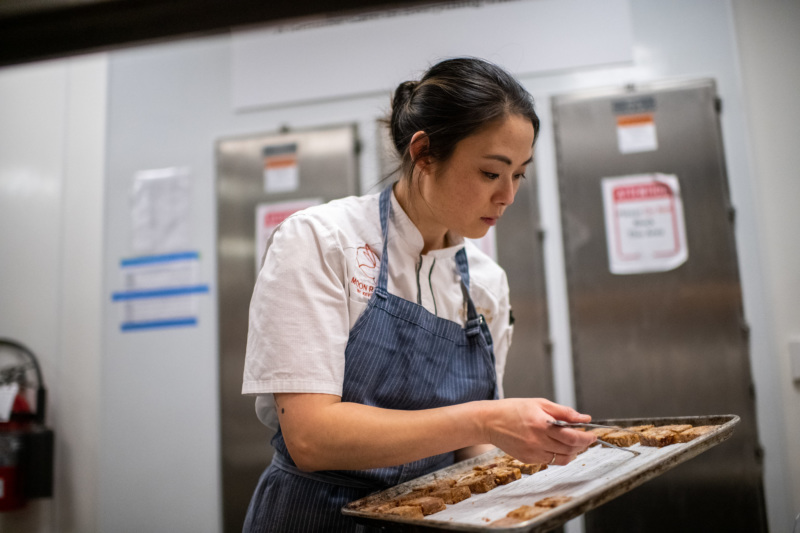Fresh Flavors, Modern Takes: Award-Winning Chefs Reimagine Vietnamese Food
For many, Vietnamese cuisine conjures images of steaming bowls of pho or crispy banh mi sandwiches. But a new wave of Vietnamese American chefs is taking this beloved cuisine to new heights, earning accolades and redefining perceptions along the way.
This is particularly true in Washington D.C., where Chef Kevin Tien, owner of the trendy downtown restaurant Moon Rabbit, is making waves. Tien's innovative take on Vietnamese flavors recently earned him the title of "Best Chef, D.C." by the Restaurant Association of Metropolitan Washington, and this year, he's a James Beard Award finalist – one of the most prestigious awards in the culinary world.
Respecting Tradition, Embracing Evolution
What makes Tien's approach so special? It's all about honoring tradition while embracing evolution. "We're not trying to do anything traditional at all," says Tien, emphasizing the abundance of phenomenal, traditional Vietnamese options available elsewhere, like D.C.'s Eden Center.
Instead, Tien focuses on pushing the boundaries of Vietnamese cuisine, similar to how other immigrant cuisines have thrived in the U.S. His dishes might look unfamiliar, but the core flavors remain undeniably Vietnamese.
A Case in Point: Reimagined Banh Canh Cua
Take Tien's reinterpretation of the classic Vietnamese noodle soup "banh canh cua." Traditionally, this dish features thick rice noodles, crab, and pork. Tien's version utilizes potato starch to create unique gnocchi-like noodles, but the essence of the dish – the rich, flavorful broth and the interplay of textures – stays true to its roots.
Desserts that Delight: A Symphony of Vietnamese Flavors
This philosophy extends to the delectable desserts crafted by Moon Rabbit's pastry chef, Susan Bae, another Vietnamese American talent and James Beard Award finalist. Bae's creations burst with Vietnamese flavors, presented in a modern, visually stunning way.
"The flavors and textures are there to mimic the original form," says Bae. "However, visually, it looks very different." Bae's desserts use visual elements to evoke the natural beauty of Vietnam, creating a multi-sensory dining experience.
Elevating Vietnamese Cuisine: A Labor of Love
Both Tien and Bae emphasize the importance of respecting Vietnamese culinary heritage. "There's a very big difference between cooking food that preserves culture and new or fusion food," says Tien. Their aim is to celebrate Vietnamese flavors and techniques while pushing the boundaries of the cuisine.
They also advocate for a shift in perception when it comes to the value of Vietnamese cuisine. "Asian cuisine shouldn't be considered cheap," says Bae, highlighting the time and skill required to create these flavorful dishes.
A Beacon for the Next Generation
Tien's restaurant serves as a bridge between generations. He describes the joy of seeing families experience his food together, particularly the reactions of the grandparents. "They're proud to see the culture being pushed forward," he says.
A Look to the Future: A Melting Pot of Flavors
Tien believes Vietnamese cuisine is following a similar trajectory to Japanese and Korean cuisine, which have seen a surge in popularity in recent years. He predicts Filipino and Laotian flavors will be the next wave to take center stage.
"Over time, different chefs are opening restaurants to bring their cuisine forward," says Tien. With culinary talents like Tien and Bae leading the way, Vietnamese food is poised to take its rightful place among the world's most celebrated cuisines.


